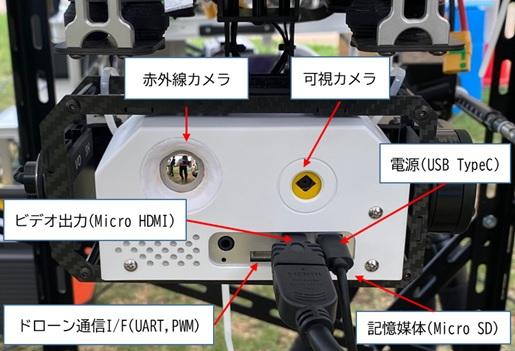Developed a system that realizes sa...
08
05
Developed a system that realizes safe exterior wall surveys by drone-Confirm diagnostic performance equivalent to infrared surveys from the ground-
Based on the provisions of Article 12, Paragraph 1 of the Building Standards Act, building owners are obliged to have first-class architects investigate the situation such as deterioration over time and report it to the specified administrative agency * 1 . In addition, according to Article 5 of the Enforcement Regulations of the Act and Notification No. 282 (2008) of the Ministry of Land, Infrastructure, Transport and Tourism based on this, the outer wall is required to be investigated by full-scale percussion with a test hammer every 10 years in principle. However, the survey by full-scale consultation required the installation of temporary scaffolding, etc., and there was a problem that the cost burden of the building owner was large.
On the other hand, exterior wall surveys using drones and infrared devices do not require temporary scaffolding, so the survey period can be shortened and costs can be reduced. In addition, there was a growing expectation that the infrared device method survey could realize early social implementation if the technical issues could be overcome. Under these circumstances, the Ministry of Land, Infrastructure, Transport and Tourism examined diagnostic methods (survey procedures, safety assurance technology, etc.) using drones equipped with infrared devices as part of the "Building Standards Development Promotion Project (T3)" in FY2017 and FY2018, and detected accuracy. We have shown operational issues due to the combined effects of flight safety and stability.

Based on this, the National Research and Development Corporation New Energy and Industrial Technology Development Organization (NEDO) has stated that "development of digital technology for refinement of regulations / technology development related to periodic surveys of outer walls of buildings using drones, etc." The Japan Building Disaster Prevention Association, the Japan Building Drone Association, the National University Corporation Kobe University, Japan Avionics Co., Ltd., and Constec Co., Ltd. are now under the influence of disturbances such as wind during drone flight. However, in addition to developing a "small infrared device" that maintains high performance, we have also developed a "proximity survey drone system" that is equipped with this device to realize safe exterior wall surveys.
This system uses a drone that has a function to automatically switch to Visual SLAM * 3 seamlessly when the position information of GNSS * 2 is not stable during drone flight, and a two-point mooring device * 4 that enables physically safe flight. It will be configured. As a result of verifying the accuracy of actually detecting the floating and peeling of the outer wall, it was confirmed that it has the same performance as the general infrared device (installed on the ground) used for the outer wall investigation and diagnosis from the ground.
Furthermore, in order to support the social implementation of the system, we have also developed a technology to improve the detection accuracy of diagnosis by drone by post-processing * 6 of infrared images using SLAM * 5 information.


![[Kill personally developed games] Top class in app history! Too beautiful water puzzle "a [Q] ua" | Famitsu App for smartphone game information [Kill personally developed games] Top class in app history! Too beautiful water puzzle "a [Q] ua" | Famitsu App for smartphone game information](https://website-google-hk.oss-cn-hongkong.aliyuncs.com/drawing/article_results_7/2022/3/3/66755df992ff2d2b1e1ab43844ef9f88_0.jpeg)





![[Latest in 2021] 10 recommended seat covers for cars!If you want to improve the texture and functionality of the car, choose the mounting type and material. [Latest in 2021] 10 recommended seat covers for cars!If you want to improve the texture and functionality of the car, choose the mounting type and material.](https://website-google-hk.oss-cn-hongkong.aliyuncs.com/drawing/article_results_7/2022/3/3/e5b44589e77141f3a633189165fb6f60_0.jpeg)